Rochester Water Quality at a Glance
disinfection byproducts
Is Rochester Water Safe to Drink?
Generally Safe But Room for Improvement – Rochester water meets federal standards and consistently earns the Partnership for Safe Water Director’s Award. However, 10 contaminants exceed health guidelines, primarily disinfection byproducts like chloroform (89x guideline), bromodichloromethane (168x guideline), and total trihalomethanes (323x guideline). The city sources from pristine Hemlock and Canadice Lakes with excellent natural water quality, but chlorination creates cancer-causing byproducts.
⚠️ Key Concerns for Rochester Residents
- Disinfection Byproducts: Chloroform at 89x health guideline; multiple trihalomethanes and haloacetic acids from chlorination process
- Cancer Risk: Total trihalomethanes at 323x health guideline; radium at 22x guideline; multiple compounds linked to cancer
- Treatment Side Effects: While source water is excellent, chlorination creates harmful byproducts that exceed health guidelines
- Lead Service Lines: 2,395 lead-containing water services replaced in 2024; ongoing replacement program still in progress
Read the full report below for detailed analysis, city-specific data, and actionable recommendations for Rochester residents.
Rochester – New York – Water Quality Report 2025: PFAS Testing, Infrastructure Concerns & Safety across your city
Rochester Water Bureau provides exceptional water services to approximately 210,000 residents throughout the greater Rochester metropolitan area, including partnerships with surrounding communities like Livingston County, Monroe County Water Authority, and the Villages of Lima. Since 1876, Rochester has built its reputation around pristine water quality, sourced primarily from the protected Hemlock and Canadice Lakes located 28 miles south of the city in the Finger Lakes region. The system encompasses over 600 miles of water distribution lines, multiple treatment facilities, and comprehensive infrastructure that delivers an average of 37 million gallons of high-quality drinking water daily.
Rochester’s water originates from two jewel-like Finger Lakes—Hemlock Lake (primary source since 1876) and Canadice Lake (added in 1919)—both situated within the nearly 7,000-acre protected Hemlock-Canadice State Forest watershed. This pristine source water is treated at the advanced Hemlock Filtration Plant using state-of-the-art processes including coagulation, filtration, disinfection, and fluoridation. In 2013, Rochester was voted as having the best tasting water in New York State. The utility’s commitment to excellence includes earning the Partnership for Safe Water “Director’s Award for Filtration Plants” for 22 consecutive years, demonstrating Rochester’s dedication to providing water that exceeds federal and state standards while preparing for future challenges including infrastructure modernization and emerging contaminants.
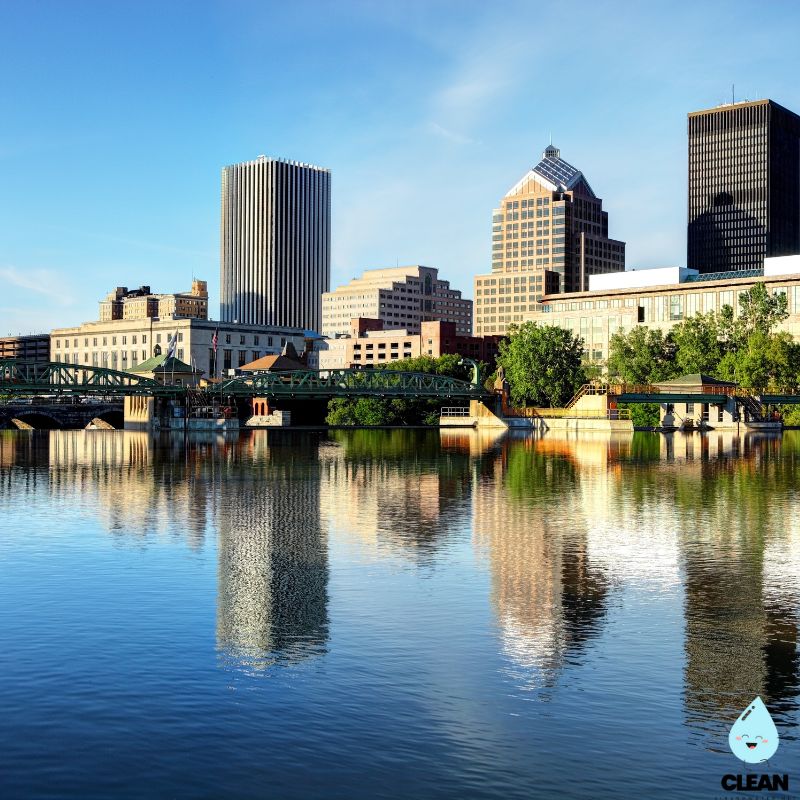
Rochester Water Quality: Current Status (2024-2025)
Latest Testing Results
- Federal Compliance: Rochester’s water meets or exceeds all EPA and New York State Department of Health drinking water standards for 2024, maintaining full regulatory compliance across all tested parameters.
- Comprehensive Testing: Rochester conducts extensive water quality monitoring with over 120 trained professionals, including more than 40 certified water system operators, ensuring rigorous testing throughout the treatment and distribution system.
- Disinfection Byproducts: While meeting federal standards, independent testing reveals 10 contaminants exceed health guidelines, including chloroform at 89 times and total trihalomethanes at 323 times EWG health guidelines.
Water Sources
- Hemlock Lake: Primary source since 1876, located 28 miles south of Rochester in a protected 7,000-acre watershed designated as the Hemlock-Canadice State Forest in 2010.
- Canadice Lake: Secondary source added in 1919, located within the same protected watershed area, providing additional capacity and system redundancy.
- Lake Ontario Water: Supplemental supply purchased from Monroe County Water Authority, treated at their Shoremont Treatment Plant on Dewey Avenue for system reliability.
Advanced Treatment Technology
- Hemlock Filtration Plant: State-of-the-art direct filtration facility with 48 million gallons per day capacity, utilizing coagulation, filtration, disinfection, and fluoridation processes.
- Corrosion Control: Advanced pH adjustment using carbon dioxide maintains optimal pH range of 7.7-8.0 to prevent pipe corrosion and minimize lead leaching from household plumbing.
- Partnership for Safe Water: Rochester earned the prestigious “Director’s Award for Filtration Plants” for 22 consecutive years, demonstrating commitment to water quality that exceeds regulatory requirements.
Infrastructure Modernization
- Lead Service Line Replacement: Aggressive program replaced 2,395 lead-containing services in 2024 alone, part of ongoing efforts to eliminate all lead service lines throughout the system by 2030.
- Distribution System Upgrades: Ongoing modernization with over $28 million invested in infrastructure improvements, including water main replacement, cleaning, and lining projects completed in 2024.
- Smart Water Management: Implementation of radio-read meters covering over 80% of the system, providing accurate usage monitoring and leak detection for improved efficiency and customer service.
Customer Protection Initiatives
Rochester Water Bureau provides comprehensive customer support through various programs, including extensive lead service line replacement assistance and the “Let’s Get The Lead Out Together” initiative offering free water testing and education. The utility maintains transparent communication through annual water quality reports and 24/7 emergency response services. Rochester’s investments in advanced treatment technologies, source water protection through the Hemlock-Canadice State Forest designation, and proactive infrastructure replacement demonstrate its commitment to providing safe, reliable drinking water while addressing emerging challenges including lead elimination, water conservation, and emerging contaminants like PFAS.
Recommendations for Rochester Residents
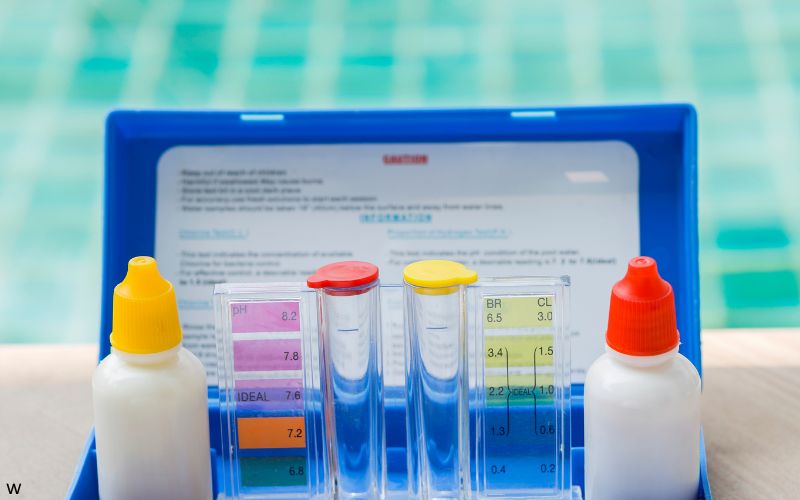
Check Your Service Line
Use Rochester’s Property Information Application at maps.cityofrochester.gov/propinfo to look up your service line material. Contact the Hemlock Water Quality Lab at (585) 428-6680 ext 1 or watertest@cityofrochester.gov for free water testing if you have concerns about lead.
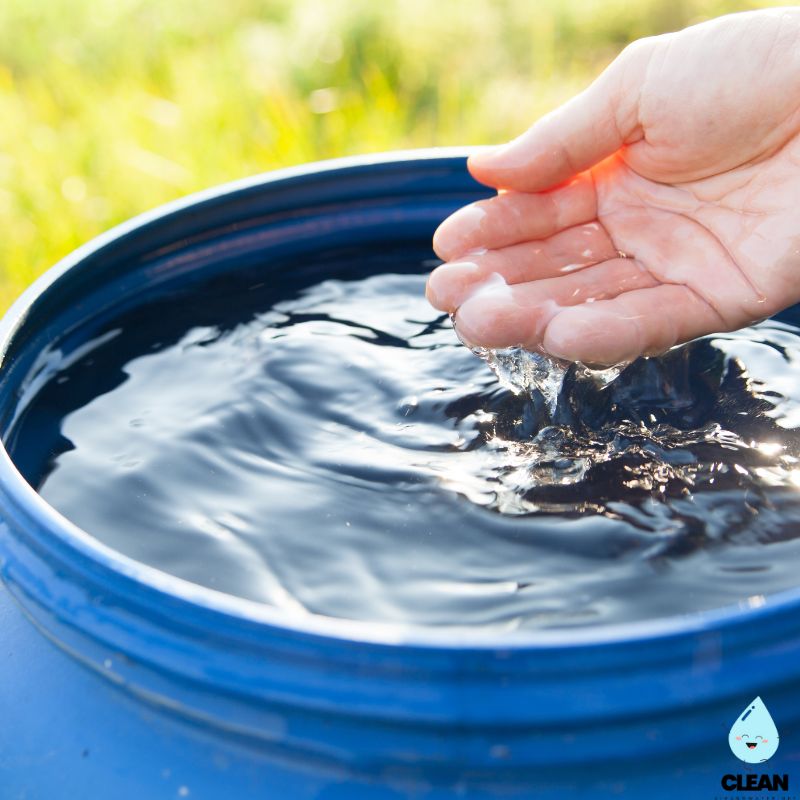
Practice Water Conservation
Take advantage of Rochester’s water conservation programs and tips available at dec.ny.gov/environmental-protection/water/water-quantity/wateruse-conservation. Simple changes like fixing leaks can save money and reduce environmental stress.

Consider NSF-Certified Filtration
While Rochester’s water meets all standards and won the state’s best tasting water award, homes with older plumbing may benefit from NSF-certified filters for additional protection against lead and disinfection byproducts.

Learn About Lead Service Lines
Visit cityofrochester.gov/lead to learn about Rochester’s aggressive lead service line replacement program. If your property has a lead service line, the city is working to replace it by 2030 at no cost to residents.

Contact Customer Service
Call 311 for Rochester residents or (585) 428-5990 from outside the city for water quality concerns, service issues, or general questions. Emergency response is available 24/7 at (585) 428-7500 for urgent water system issues.
Frequently Asked Questions
Is Rochester’s tap water safe to drink?
Yes, Rochester’s tap water meets all federal and state drinking water standards and is generally safe to drink. The city’s water comes from the pristine Hemlock and Canadice Lakes in a protected 7,000-acre watershed, with supplemental Lake Ontario water from Monroe County Water Authority.
Rochester Water Bureau employs over 120 experienced professionals including more than 40 certified water system operators. The Hemlock Filtration Plant has earned the Partnership for Safe Water “Director’s Award for Filtration Plants” for 22 consecutive years, demonstrating excellence that exceeds regulatory requirements. In 2013, Rochester was voted as having the best tasting water in New York State. However, independent testing shows 10 contaminants exceed health guidelines, primarily disinfection byproducts from the chlorination process.
What is Rochester doing about lead in water?
Rochester has an active lead service line replacement program in progress:
• Current Progress: 2,395 lead-containing water services were replaced in 2024 alone as part of ongoing replacement efforts
• Replacement Timeline: City is working to replace lead service lines system-wide, with completion targeted by 2030
• Free Service: Lead service line replacement at no cost to property owners
• Comprehensive Testing: Free water testing available through the Hemlock Water Quality Lab at (585) 428-6680 ext 1
• Current Status: Rochester meets EPA lead regulations with levels well below the action level
Residents can check their service line material at maps.cityofrochester.gov/propinfo or contact the Water Bureau for assistance.
Why does my water sometimes taste different?
Occasional taste variations can result from several factors:
Seasonal Water Quality Changes: Natural variations in source water from Hemlock and Canadice Lakes can affect taste, especially during heavy rainfall or seasonal changes.
Water Source Mixing: Some areas receive either Hemlock Lake water or Lake Ontario water (from MCWA), or a mixture of both depending on the season, which may cause subtle taste differences.
Home Plumbing Factors: Internal plumbing issues or water that has been sitting in pipes for extended periods can sometimes affect taste.
Chlorine Levels: Disinfection levels may vary slightly to maintain water safety throughout the extensive distribution system.
If taste concerns persist, contact Rochester Water Bureau at 311 or (585) 428-5990. Running cold water for a few minutes after periods of non-use often improves taste and quality.
How is Rochester’s water tested for emerging contaminants?
Rochester conducts comprehensive monitoring for emerging contaminants:
PFAS Testing: Under EPA’s Fifth Unregulated Contaminant Monitoring Rule (UCMR5), Rochester tests for various PFAS compounds. Current testing shows no detectable PFAS levels in Rochester’s water supply, meeting new EPA regulations.
Disinfection Byproducts: Regular monitoring shows disinfection byproducts are present and detectable, with some exceeding health guidelines despite meeting federal standards. Total trihalomethanes and haloacetic acids are monitored quarterly.
Comprehensive Screening: Testing includes over 100 compounds including pesticides, herbicides, industrial chemicals, and pharmaceuticals – with the vast majority not detected or at very low levels.
Source Water Protection: The protected Hemlock-Canadice State Forest watershed prevents industrial and agricultural contamination at the source.
Rochester’s annual Water Quality Report provides detailed testing results and is available at cityofrochester.gov/waterbureau.
Quality News About Your Water
Get the comprehensive water quality news coverage you need with our dedicated US Water News Service. From coast to coast, we deliver in-depth reporting and expert analysis on PFAS contamination, EPA regulatory changes, infrastructure developments, and emerging water safety issues affecting communities nationwide. While mainstream media only covers the biggest stories, we provide the detailed, ongoing coverage that helps you understand the full scope of America’s water challenges. Whether you’re a concerned citizen, water professional, or community leader, our daily updates and analytical insights keep you informed about the issues that matter most to public health and environmental safety.
Contaminants of Concern
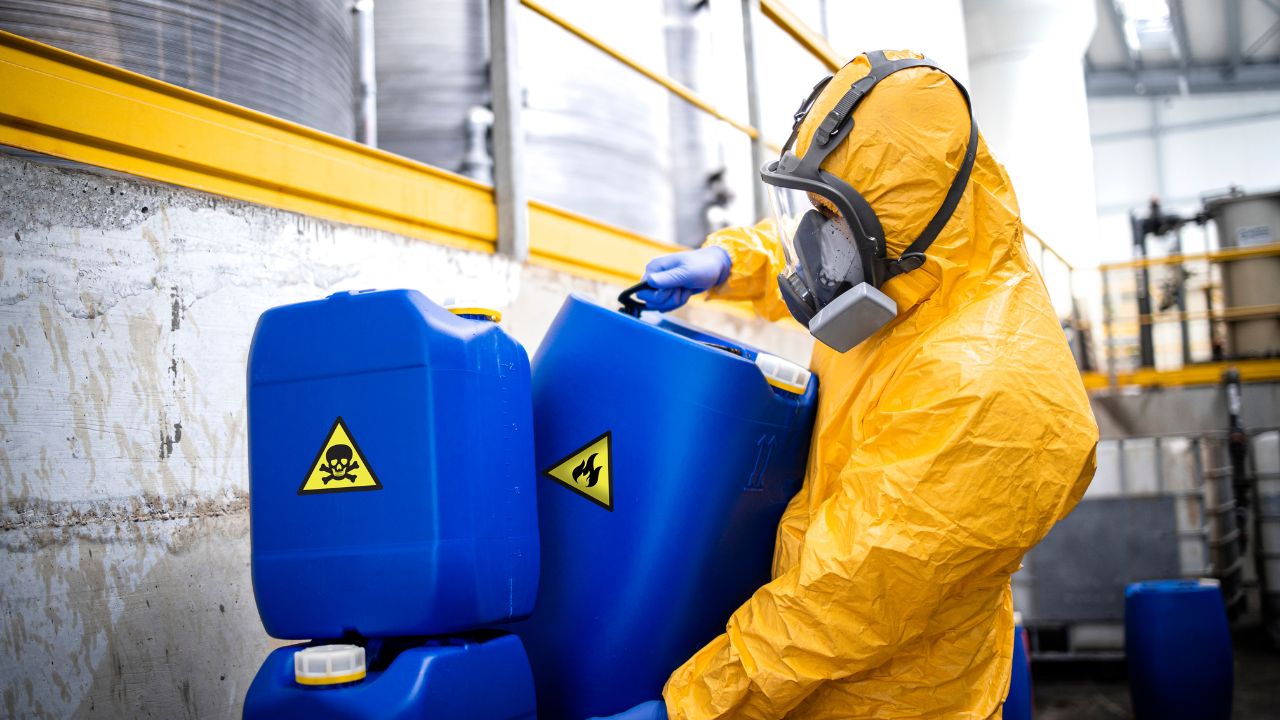
Disinfection Byproducts
Source: Formed when chlorine disinfectants react with naturally occurring organic matter in source water from Hemlock and Canadice Lakes; levels monitored throughout the distribution system
Health Effects: Long-term exposure to elevated levels may increase risk of certain cancers and potentially affect liver, kidney, and central nervous system function
Current Levels: Total trihalomethanes at 48.4 ppb (323x health guideline) and haloacetic acids at 28.5 ppb (285x health guideline); chloroform at 35.7 ppb (89x health guideline) EPA Limits: 80 ppb for TTHMs and 60 ppb for HAA5 – Rochester meets federal standards but exceeds health guidelines
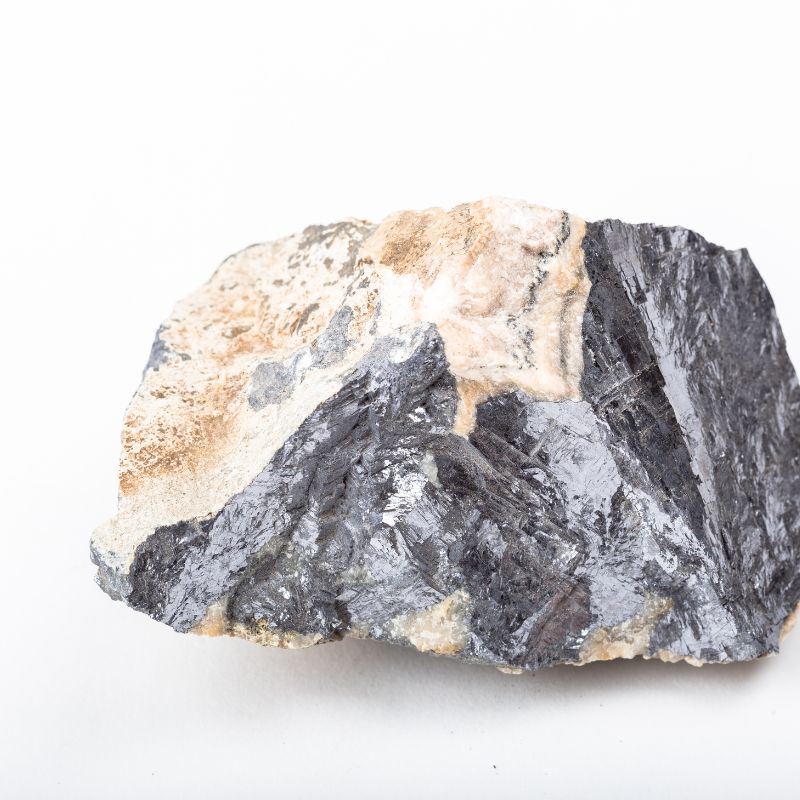
Lead from Service Lines
Source: Lead service lines and household plumbing components in older homes; not present in Rochester’s source water or distribution mains
Health Effects: Particularly harmful to children and pregnant women, causing developmental issues, lowered IQ, and damage to kidneys and brain; no safe level exists
Current Status: Rochester meets EPA regulations with lead levels in compliance; aggressive replacement program targeting lead service lines system-wide by 2030 with 2,395 services replaced in 2024 EPA Action Level: 15 ppb – Rochester maintains compliance with this threshold

PFAS Compounds
Source: Per- and polyfluoroalkyl substances from industrial processes, firefighting foams, and consumer products that can potentially enter water sources
Health Effects: Research suggests potential impacts on immune system, thyroid function, cholesterol levels, and possible links to certain cancers
Current Status: 2024 UCMR5 testing shows no detectable PFAS compounds in Rochester’s water supply from either Hemlock/Canadice Lakes or supplemental Lake Ontario sources EPA Limits: New 2024 regulations set limits at 4 ppt for PFOA and PFOS – Rochester currently has no detectable levels
Please read – our information
The information presented on cleanairandwater.net is compiled from official water quality reports, trusted news sources, government websites, and public health resources. While we strive for accuracy and thoroughness in our presentations, we are not scientists, engineers, or qualified water quality professionals.
Our mission is to present water quality information in an accessible, real-world format that helps people understand what’s in their water and make informed decisions about their health and safety. We believe that complex environmental information should be available to everyone in a format that’s easy to understand.
We make every effort to ensure our content is current and accurate, but we cannot guarantee that all information is complete or error-free. This website should not replace official communications from your local water utility or health department. We always recommend consulting official sources for the most up-to-date information regarding your specific water system.
Clean Air and Water is not liable for any unintentional errors, omissions, or outdated information. The content on this site is provided for informational purposes only and should not be considered professional advice.


